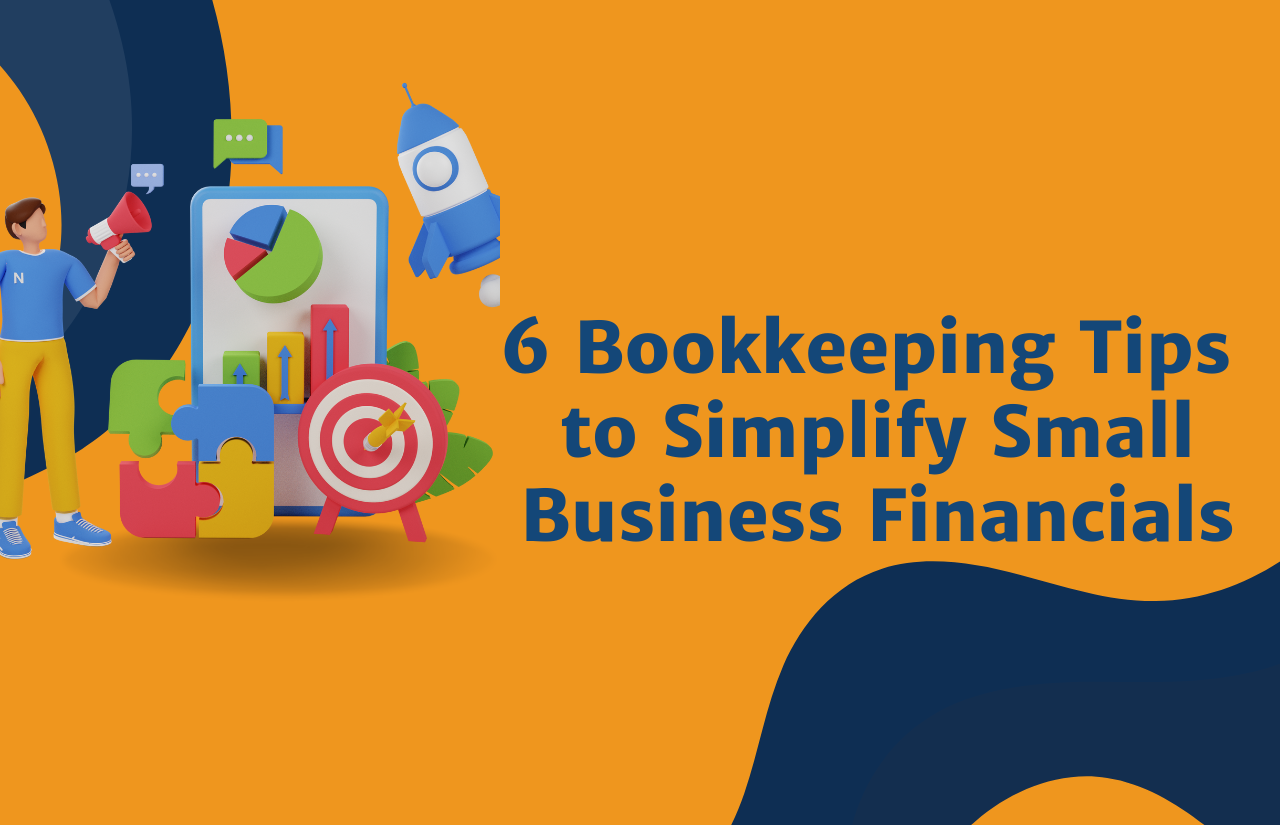As a small business owner, you’re always looking for ways to maximize profits and make informed decisions about your business. One crucial aspect of this is understanding your contribution margin.
But what exactly is the contribution margin, and how can you calculate it?
In simple terms, contribution margin is the amount of money your business earns after covering its variable costs. It’s a key metric that helps you determine how much each sale contributes to your overall profitability.
Knowing your contribution margin can help you make informed decisions about pricing, cost control, and overall business strategy.
In this guide, we’ll break down how to calculate contribution margin, why it’s important for small businesses, and how to use it to make strategic decisions.
Whether you’re a seasoned business owner or just starting out, understanding contribution margin is essential to maximizing your profits and achieving long-term success.
So, let’s dive in and explore what contribution margin is and how you can calculate it for your business.
What is Contribution Margin?
Before we dive into the calculation of contribution margin, let’s first define what it is and why it matters for small businesses.
The contribution margin is a financial metric that measures the amount of money a business earns after deducting its variable costs from its revenue. Variable costs are expenses that fluctuate based on the level of production or sales, such as raw materials, production labor, and shipping costs.
In other words, the contribution margin represents the portion of each sale that contributes to covering the fixed costs of your business. This costs can be rent, salaries, and equipment.
It’s the amount of money that’s left over to cover these costs after accounting for the costs directly related to producing or selling your product or service.
Knowing your contribution margin is critical for small businesses because it helps you understand how much revenue you need to generate to cover your fixed costs and start generating a profit.
It also allows you to make informed decisions:
- about pricing,
- production volume,
- and cost control.
Next, we’ll explore how to calculate the contribution margin and the formula used to determine it.
How to Calculate Contribution Margin
Calculating contribution margin is a straightforward process that involves subtracting variable costs from revenue. Here’s the formula:
Contribution Margin = Revenue – Variable Costs
To illustrate this formula, let’s consider an example. Say you run a small business that sells handmade soap, and your revenue for a given period is $10,000. Your variable costs for the same period, such as the cost of raw materials and labor, are $6,000.
Using the formula above, your contribution margin would be:
Contribution Margin = $10,000 – $6,000 = $4,000
This means that for every $10,000 in revenue you generate, $4,000 contributes to covering your fixed costs and eventually generating a profit.
This formula is easy to find even if you are just at the beginning of your journey. Simply write: “contribution margin formula” in the search bar on Google.
Another way to calculate contribution margin is to use the contribution margin percentage formula, which expresses contribution margin as a percentage of revenue. Here’s the formula:
Contribution Margin Percentage = (Contribution Margin / Revenue) x 100
Using the same example as before, your contribution margin percentage would be:
Contribution Margin Percentage = ($4,000 / $10,000) x 100 = 40%
This means that 40% of each sale contributes to covering your fixed costs and generating a profit.
By calculating your contribution margin and percentage, you can better understand the financial health of your business and make informed decisions about pricing, production, and cost control.
How to Use Contribution Margin in Decision Making
Knowing your contribution margin can help you make strategic decisions about your business. Here are some ways you can use contribution margin in decision-making:
1. Pricing Decisions
Understanding your contribution margin, means that you can determine the minimum price you need to charge for a product or service to cover your variable costs and make a profit. You can also experiment with different pricing strategies and see how they affect your contribution margin and profitability.
2. Product Mix Decisions
If you calculate the contribution margin of each product or service you offer, you can determine which ones are the most profitable and adjust your product mix accordingly. By doing so, you will identify which products or services are not generating enough contribution margin and consider discontinuing them.
3. Cost Control Decisions
When you analyze your variable costs and look for ways to reduce them, you can increase your contribution margin and profitability. For example,let’s say, you can negotiate better prices with suppliers, streamline your production process, or eliminate unnecessary expenses.
4. Break-Even Analysis
By calculating your contribution margin and fixed costs, you can determine your break-even point, which is the minimum amount of revenue you need to generate to cover your costs and break even. This can help you set realistic goals for your business and measure your progress over time.
You can explore this template for break-even analysis.
Calculating your contribution margin is essential for making informed decisions about your business. If you understand your revenue, variable costs, and fixed costs, you can determine your contribution margin and percentage and use them to guide your pricing, product mix, cost control, and break-even analysis.
In the next section, we’ll go over some common mistakes to avoid when calculating contribution margin.
While speaking of mistakes, you should read our guide for the most common bookkeeping mistakes.
Contribution Margin Percentage Formula
Now that we understand the basic concept of contribution margin and how to calculate it, let’s take a closer look at the contribution margin percentage formula.
The contribution margin percentage is the percentage of each dollar of revenue that contributes to covering a company’s fixed expenses and ultimately profits. It is calculated by dividing the contribution margin by the total revenue.
The formula for contribution margin percentage is as follows:
Contribution Margin Percentage = (Contribution Margin / Total Revenue) x 100%
For example, let’s say a company has total revenue of $100,000 and a contribution margin of $40,000. We can calculate the contribution margin percentage as follows:
Contribution Margin Percentage = ($40,000 / $100,000) x 100% = 40%
This means that for every dollar of revenue generated, 40 cents go towards covering fixed expenses and contributing to profits. The higher the contribution margin percentage, the better, as it indicates that the company is generating more revenue that is contributing toward profits.
It’s important to note that the contribution margin percentage can vary depending on the industry and business model. For example, a business with high fixed costs and low variable costs may have a lower contribution margin percentage compared to a business with low fixed costs and high variable costs.
Understanding the contribution margin percentage is important for small business owners, as it allows them to make informed decisions about pricing, product mix, and overall profitability.
By calculating the contribution margin percentage, small business owners can identify areas of their business that are contributing the most towards profits and adjust their strategies accordingly.
Now that we’ve covered the basics of contribution margin and how to calculate it, let’s dive deeper into how small business owners can use this metric to make strategic decisions.
Using Contribution Margin to Make Business Decisions
Knowing the contribution margin can be helpful for small business owners when making important decisions such as setting prices or deciding whether to launch a new product or service.
Here are some ways contribution margin can be used to make informed business decisions:
Setting Prices
Understanding the contribution margin can help small business owners set prices for their products or services.
By calculating the contribution margin per unit, business owners can determine the minimum price they need to charge to cover their variable costs and make a profit. If the market price for the product or service is lower than the minimum price needed to cover costs, the business may need to either reduce variable costs or find ways to increase the contribution margin.
Determining the Most Profitable Products or Services
Small business owners can use contribution margin to determine which products or services are the most profitable. By calculating the contribution margin for each product or service, business owners can identify the ones that generate the most profit per unit sold.
This information can help business owners focus their resources on the most profitable products or services and consider phasing out less profitable ones.
Launching New Products or Services
Calculating the contribution margin can also help small business owners decide whether to launch a new product or service. By estimating the contribution margin for the new product or service, business owners can determine whether it will be profitable enough to cover its variable costs and contribute to the overall profitability of the business.
Making Cost-Reduction Decisions
Finally, contribution margin can be used to help small business owners make cost-reduction decisions. By analyzing the contribution margin for each product or service, business owners can identify areas where they can reduce variable costs to increase the contribution margin. For example, they may decide to find a cheaper supplier or reduce the cost of materials used in production.
When speaking about costs, we have prepared an article about costs when having a bookkeeper. You might find it helpful at some point.
Tips for Using Contribution Margin
Now that we’ve covered the basics of contribution margin, let’s explore some tips for using it effectively in your small business:
1. Monitor your contribution margin regularly
One of the most important things you can do is monitor your contribution margin regularly. This will help you identify any changes or trends in your business that could affect your profitability.
By keeping a close eye on your contribution margin, you can make adjustments to your pricing, costs, or operations to maintain or increase profitability.
2. Set contribution margin goals
Setting contribution margin goals can help you stay focused on profitability and provide motivation for your team. It’s important to set realistic and achievable goals based on your business’s history and market conditions.
By setting goals, you can track your progress and make adjustments as necessary to reach your targets.
3. Analyze your product mix
Understanding your product mix is crucial to optimizing your contribution margin. You should analyze your product mix to determine which products are contributing the most to your bottom line and which ones may be dragging down your profitability.
By focusing on your most profitable products and adjusting your pricing or costs for lower-performing products, you can improve your overall contribution margin.
4. Consider the impact of volume on the contribution margin
Volume can have a significant impact on contribution margin, especially for businesses with high fixed costs. By understanding how changes in volume affect your contribution margin, you can make informed decisions about pricing, production, and other business operations.
For example, you may be able to reduce your costs per unit by increasing production volume or negotiating better pricing with suppliers based on higher order volumes.
5. Use contribution margin to evaluate new opportunities
The contribution margin can also be a valuable tool for evaluating new business opportunities. By calculating the contribution margin for a new product or service, you can assess its potential profitability and determine whether it’s worth pursuing.
This can help you make informed decisions about investing in new opportunities or expanding your business.
By following these tips and regularly monitoring your contribution margin, you can improve your small business’s profitability and make informed decisions about pricing, costs, and operations.
Conclusion
Calculating the contribution margin of your small business is an essential step in understanding the profitability of your products or services.
Here is an article that can give you valuable insight into P&L Statement.
By using the simple formula of sales revenue minus variable costs, you can determine your contribution margin and use it to make important business decisions.
Whether you are deciding on the pricing strategy for a new product or trying to improve the profitability of an existing service, contribution margin analysis can provide valuable insights.
Remember, the contribution margin is not the same as net profit, which takes into account fixed costs and other expenses. However, understanding the contribution margin of each product or service can help you make informed decisions that ultimately lead to higher profits.
As a small business owner, it’s important to take the time to calculate your contribution margin regularly and use it as a tool to guide your business decisions.
We hope this guide has been helpful in understanding how to calculate contribution margin and its importance to your small business’s success.
With an understanding of the contribution margin, you’ll be able to calculate your contribution margin ratio.
If you have any questions or need assistance in calculating your contribution margin, don’t hesitate to reach out to a professional bookkeeper or accountant.
As an eCommerce owner consider this as a reminder to think about why bookkeeping is important for your business.



